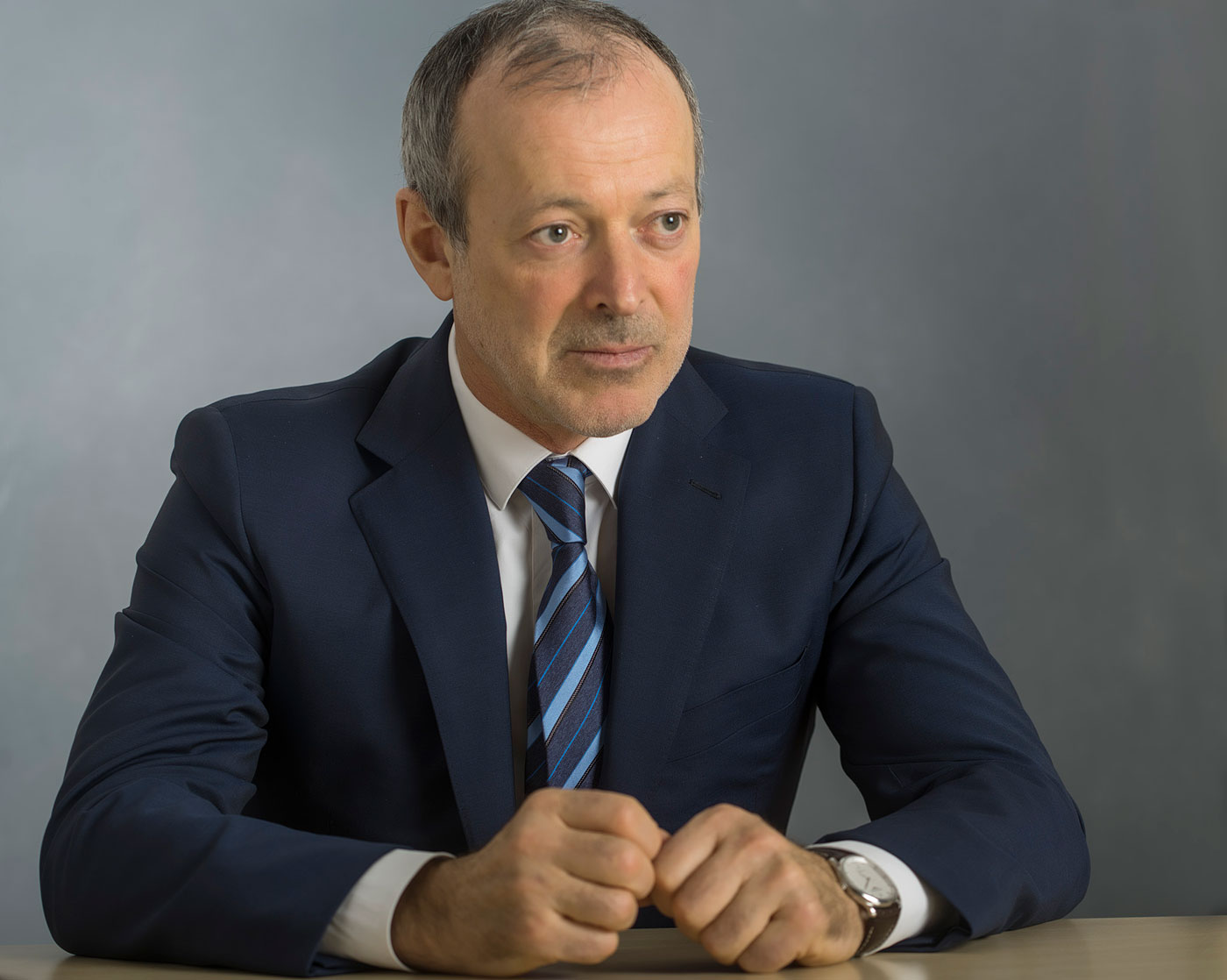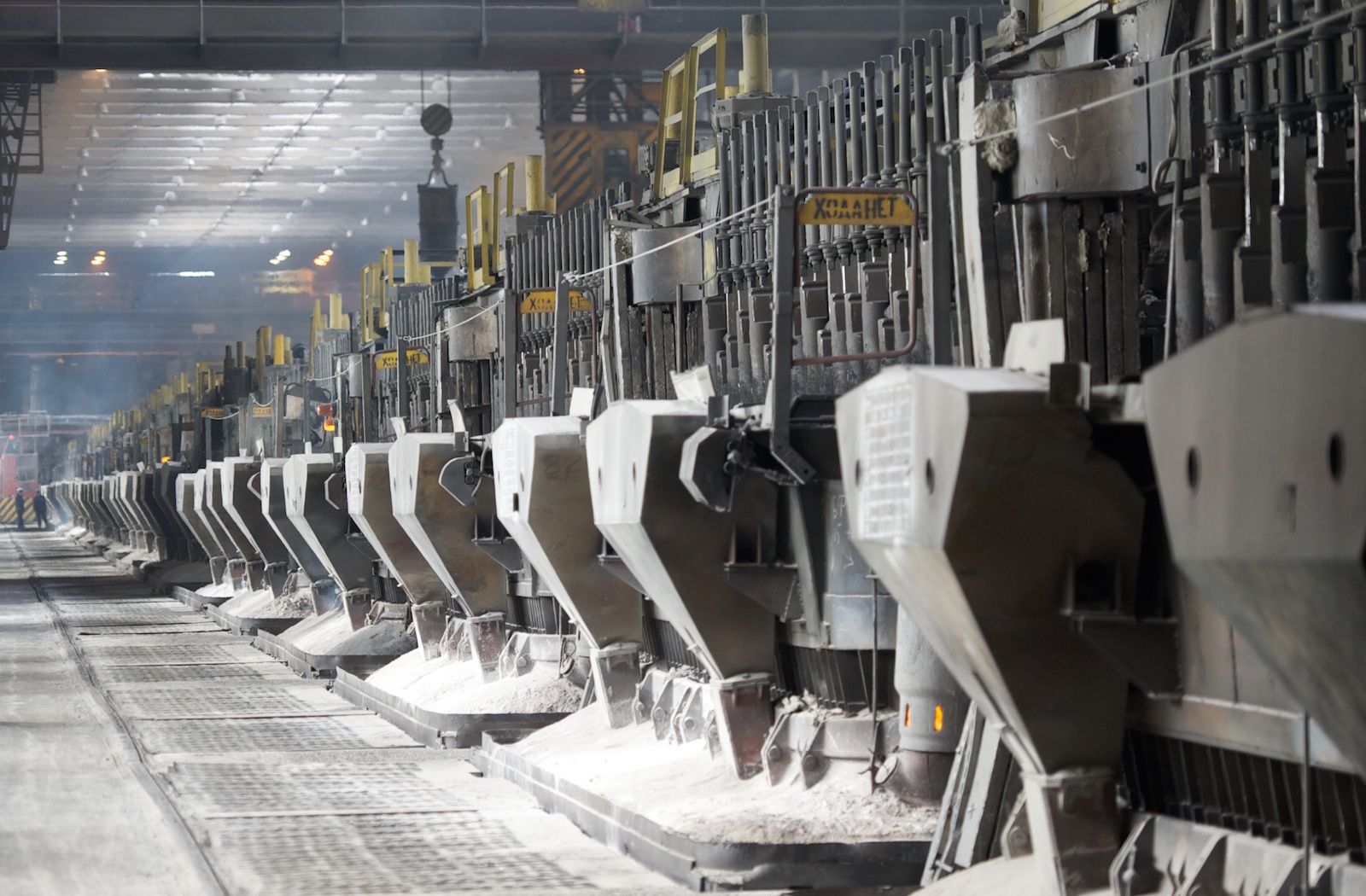
UC Rusal has recently invested in the development and implementation of several cutting edge technologies in primary aluminum production and downstream processing at its facilities in Russia, as well as bringing a number of innovative products to the market. Victor Mann, who has been technical director of Rusal since 2005, is in charge of research and development, engineering, and design, as well as process management, technical development and modernization of production facilities, startup, and commissioning of greenfield and upgraded capacities. Prior to this, he served as head of Rusal’s Engineering and Technology Centre, as deputy technical director of the Krasnoyarsk smelter, and as head of Automation with the Krasnoyarsk smelter. In this interview, Mann discusses the successful development project achieved by Rusal’s process engineers and the promising developments the company is currently working on.
Primary Aluminum Innovations
Rusal recently started up a pilot line of eight RA-550 cells at its Sayanogorsk aluminum smelter. Can you tell us how the new production process has been faring so far?
We did indeed launch an entire production area equipped with RA-550 cells in Sayanogorsk in 2017. At this point, I can say with certainty that we’ve achieved some really outstanding results, which have met, and in some cases even exceeded, the project’s original targets. It’s a breakthrough technology that has set the benchmark for a new standard for the global aluminum industry, a fact confirmed by numerous foreign experts.

Tell us about Rusal’s introduction of the EcoSøderberg process — one of the largest technical projects undertaken by the company — and how has it has been progressing.
At Krasnoyarsk (KrAZ), where the project began, the vast majority of its reduction cells have already been upgraded to the EcoSøderberg standard, and work is underway at other smelters as well. The targets have been achieved for all the parameters and, as our measurements indicate, for some characteristics the results have actually exceeded the expectations. Thus, our fluoride measurements suggest that results are even better than in the neighboring baked anode potrooms. And when it comes to sulphur capture, the performance has definitely been better than the target thanks to the two-stage cleaning system. There are still unresolved issues about benzopyrene and we’re going to continue to work to reduce the emissions of this substance.
Since large quantities of benzopyrene are contained in pitch, how is Rusal working to solve this issue?
We’re trying to develop alternative binders. The coal tar pitch that Rusal uses today is a product that’s been running low in the market. We have to buy it in China at a sky-high price. On top of that, it contains large quantities of benzopyrene. So, we’ve decided to develop a new kind of environmentally friendly pitch with a very low benzopyrene content, made by heating up and dissolving coal. This is a completely new process that Engineering and Technology Centre (ETC) technicians are working on in conjunction with researchers from the Siberian Federal University and a number of other Russian universities. A small experimental production facility was set up in Biysk, and the first few tonnes of the alternative binder have already been produced. It’s going to be tested in the reduction cells at KrAZ.
Rusal has been actively working toward the creation of an inert anode-based smelting process, with the aim of transferring its entire aluminum production to this technology should it be successful. What is the latest on this development?
We’re already trialling several types of new reduction cells and we’ve effectively narrowed down the types that are most likely to work and are worth experimenting with. But there’s still a lot of work to be done.
How is Rusal addressing the environmental challenge regarding spent potlining disposal?
The problem regarding where to put the spent lining is the Sword of Damocles for aluminum producers worldwide. Western companies, for example, have to pay up to US$500 for each tonne of spent lining they dispose of. We’ve decided instead to create our own technology for recycling it. In the process, we learned how to decontaminate up to 100% of spent lining by converting it into a carbon material that can be burned in the sintering kilns at Achinsk alumina refinery. This is used in ferrous metal production, as well as in the production of cement and cryolite. The process is very profitable and has a very bright business future.
Tell us about the the acid based alumina production process developed by Rusal.
We launched a physical model, a mini-refinery in Saint-Petersburg on the VAMI premises where we managed to work out all the kinks of this new process. Some crude alumina was made, and operating performance and CAPEX were confirmed. The next step will be the construction of a pilot production facility at the Achinsk refinery. This new process gives us a huge competitive advantage as it allows us to make high quality alumina right next to our aluminum smelters using our own raw materials.
Downstream Developments
Rusal commissioned a SLIPP rolling mill for wire rod production at the Irkutsk (IrkAZ) aluminum smelter. How is work on this project progressing?
What makes our machine truly unique is that it combines two very complex production processes into one. So far, its commercial operation at IrkAZ has been meeting all our expectations. Furthermore, this rolling mill was used last year to make wire rod for the production of welding wire for the first time, a product that had never before been produced in Russia. As far as I know, elsewhere in the world, wire rod is made using the pressing process and we have not been able to find any information about a process similar to ours. In the meantime, the first batch of welding wire has already been produced from our wire rod, so this is a very important area for us.
What are the prospects of this technology?
We plan to target the global market with the SLIPP mill. We’re on our way to signing a contract to commercialize the project with a foreign company. Rusal will supply the technology, while our partners will produce the equipment. We can see a lot of interest in the market in this kind of machine. It will be produced under a separate patented trademark.
As for our prospects for SLIPP in the domestic market, we plan to take full advantage of our capabilities in additive manufacturing and build a complete production cycle — from wire rod to wire to a finished 3D-printed product. I think this is going to take us five to seven years.
Tell us about Rusal’s research into additive manufacturing.
We’ve developed powders that are now being tested by our consumers. They offer significantly better properties than the raw materials currently available in the market. It’s a very promising field. While the market for 3D printing powders is still not well-developed, estimated at dozens of tonnes, it’s growing in leaps and bounds, exceeding the most daring forecasts. So we’re working in this direction by obtaining state grants, creating a new atomizer, and engineering new innovative powders.
What are some of the new products that are being developed by Rusal’s process engineers?
We’ve made some organizational changes and now the development of new high technology, downstream and midstream processes, 3D printing, new alloys, aluminum-based composite materials, master alloys, and aluminum based chemical products are the priority for our Institute of Light Metals and Technologies. Rusal set up the institute with the National University of Science and Technology supported by Russia’s Ministry of Industry and Trade and the Ministry of Education and Science of the Russian Federation.
As far as the projects that we’ve already implemented, we’ve launched pilot production of a scandium master alloy that we are now going to use as the basis for new types of master alloys. The production area is up and running, we have approval from several customers and the first batch has already been shipped. We’ve also got an experimental production area where we make scandium from red mud and where we’ve managed to significantly cut production costs. The goal for this year is to reduce these by another 30%. Once that’s done, we can start working on a feasibility study and then build a larger production facility.
Furthermore, a number of new alloys have been engineered in cooperation with our clients from Japan and Europe. Some research has also been carried out in casting, allowing us to improve the quality of alloys by reducing their hydrogen and sodium content. We’ve also had a new ingot shape patented, which makes transportation easier (because it helps preserve the integrity of the bundles) and also has a lower porosity. It was tested at IrkAZ and now a mass production process for it is being developed.
